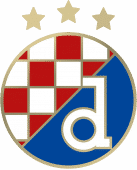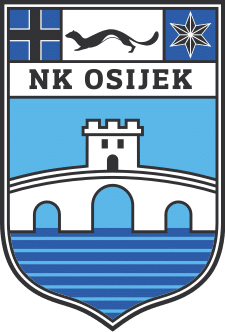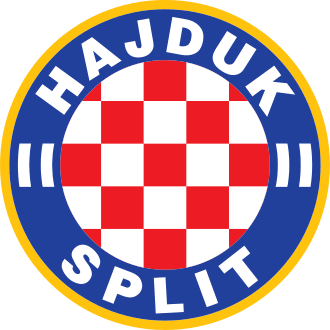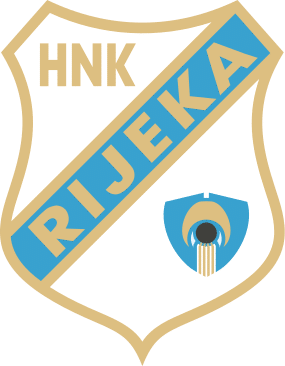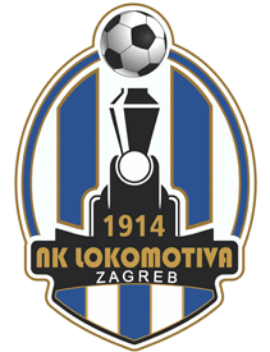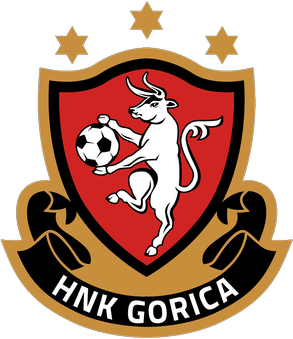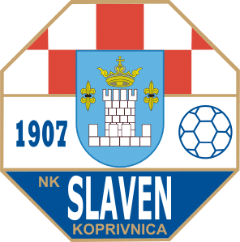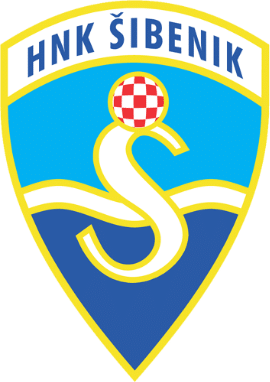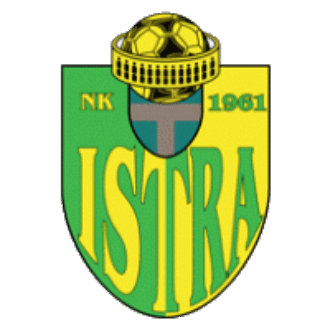GNK Dinamo Zagreb Tryouts & Club Guide: History, Stadium, Players, and More!

Welcome!
Discover the world of soccer with fcscout.com, your go-to scout for club tryout information, club guides, player profiles, in-depth product reviews, and more. We’re dedicated to exploring and revealing the best in each domain, empowering you with knowledge to make informed choices.
Thank you for being here!
Hi, I’m Carlos! A coach, sports enthusiast, and the founder of FCScout.com.
I fell in love with the game at a very young age like many of you. I’ve been following and playing soccer for many years.
Throughout my career, I always enjoyed helping soccer players chase their dreams, which is why I started this website. I wanted to reach a larger audience outside of my local area and fcscout.com was born.
This website is a platform I will be using to update club pages on any tryouts, stadiums, players, tech, and more from clubs around the world. I also create free recruitment profiles for players looking to have that extra competitive edge when reaching out to clubs.
That’s it. That’s my pitch for you to stick around (or browse the site as you please).
This is already too much text for a “see more” drop-down button thing. If you want to reach out to me, head on over to my contact page 🙂

Građanski nogometni klub Dinamo Zagreb, commonly referred to as GNK Dinamo Zagreb is a Croatian professional football club based in Zagreb. The club competes in the Prva HNL, the top flight of Croatian football.
GNK Dinamo Zagreb Youth Development System
Dinamo’s Youth Academy is one of the most successfull football schools in the world. Except great results that club has achieved in the past, we would like to point out our Youth Academy which is recognized and respectable globally, especially in the last decade. Youth selections and large number of talented players are often showing their quality by winning domestic and international tournaments, as well as domestic championship. There are 11 young selections and approximately 250 registered players at this time. Also, best of them in every selection have opportunity to prove themselves during the career, of course in order to play for the first team in the future.

Some of well-known players who started their career in Dinamo’s Youth Academy are Alen Halilović, Luka Modrić, Dejan Lovren, Vedran Ćorluka, Mateo Kovačić, Niko Kranjčar. The most talented players from U-17 and U-19 selections have a chance to show their quality by playing for the first team. One of club’s biggest stories is the story of Alen Halilović who started his career as a young boy in our Academy, played for all youth selections and with 16 years and 3 months became the youngest player who debut for the first team (at that time). After great games in Dinamo’s jersey his talent was recognized by FC Barcelona. Famous club decided to give him a chance to show his quality in their B squad. Also, there is a brilliant result achieved in 2013 when Dinamo’s U-15 team won Manchester United Premier Cup, the strongest U-15 competition and unofficial U-15 World cup.

CONTACTS:
tel. 01/2386126
fax. 01/2386127
e-mail: nogometna.skola@gnkdinamo.hr
GNK Dinamo Zagreb Academy Teams
There are a total of ten age categories, the oldest being the Junior Team (under-19) and youngest being the Zagići II Team (under-8).
Dinamo Zagreb U-8
Dinamo Zagreb U-9
Dinamo Zagreb U-10
Dinamo Zagreb U-11
Dinamo Zagreb U-12
Dinamo Zagreb U-13
Dinamo Zagreb U-14
Dinamo Zagreb U-15
Dinamo Zagreb U-16
Dinamo Zagreb U-17
Dinamo Zagreb U-18
Dinamo Zagreb U-19
GNK Dinamo Zagreb Recruitment Trials
At the time of this writing, there is no official publishing’s on GNK Dinamo Zagreb trials. Please come back at a later date while we monitor this club or click here to visit their official news section.
EXPLORE MORE CLUBS!
Explore more professional clubs by continent.
GNK Dinamo History
Foundation of Građanski (1911–45)
Andrija Mutafelija and a few of his friends established Graanski in 1911 in Zagreb in response to rumors that a football club that was going to play in the Hungarian football league (as opposed to the Croatian Sports Union) was about to be established. At the time, Croatia was still a part of the Austro-Hungarian Empire. Consequently, Graanski was established as a multi-sports club with a uniquely Croatian character with the intention of catering to inhabitants of Zagreb.
The club now has sections dedicated to the sports of football, handball, and cycling. In the beginning, they played their games on the fields located in the Zagreb neighborhoods of Tukanac, Martinovka, Kanal, and Maksimir. Later, they decided to construct their very own stadium on Koturaka street, and Stjepan Radi, a prominent Croatian politician, was the one to officially open it in 1924. The club enjoyed a great deal of success on the international stage, participating in a number of successful tours. During one of these tours, which took place in Spain in 1923, Graanski was victorious over both Barcelona and Athletic Bilbao.
The club frequently traveled to Austria and Hungary on tours, where they competed in friendly matches against the best local teams. They went on tour to England in 1936, which is when they decided to play in the WM formation, which ultimately led to them winning the Yugoslav title in 1936–1937. Márton Bukovi, who began utilizing the formation in his role as manager of Graanski in 1936, took it to Hungary in the late 1940s. He eventually changed it into the now-famous WW system, which brought the Hungary national football team to the final game of the 1954 World Cup. On three separate times – in 1928, 1937, and 1940 – the club participated in the Mitropa Cup, which was the first European international club tournament. In 1928, Viktoria ikov of Czechoslovakia eliminated Graanski from the competition in the quarterfinals after winning both legs of the match 4-8 on aggregate.
After another wait of nine years, Graanski was eliminated in the first round by Genova 1893 FBC after suffering an aggregate defeat of 1:6. In 1940, they advanced to the semifinals by advancing through Rapid Bucharest, despite having previously defeated the Hungarian team jpest FC (5:0 on aggregate) in the quarterfinals. Due to the fact that neither leg resulted in a goal, a playoff match was played in Subotica, and it ended in a draw. The outcome of the game was decided by flipping a coin, but the championship match (which was supposed to be played against Ferencváros) was postponed since World War II broke out.
Following the invasion of Yugoslavia by Axis powers in 1941, the Kingdom of Yugoslavia was dissolved, and all sporting events within the country were put on hold until the war was over. The Independent State of Croatia (NDH), which had experienced peace as a member of the Axis, was one of the few exceptions. As a result, the NDH continued to host national championships, in which notable Croatian clubs participated. Only the second and third editions of these seasons were completed, with Graanski taking first place in the 1942–43 season. These seasons began in 1941, 1941–42, 1942–43, and 1943–44 respectively.

After the war ended in 1945, the club was dissolved by the new communist government (together with city rivals HAK and Concordia Zagreb), and the club’s archives were burned as a form of retaliation for participating in the fascist-sponsored football league during the war. On April 10, 1945, the club played its final official game, which ended in a tie with HAK 2–2, just a few days before both teams’ dissolution.
Dissolution of Građanski and establishment of Dinamo (1945–66)
By a directive issued by the communist government in June 1945, the city rivals HAK and Concordia Zagreb, as well as Graanski, were all forced to disband shortly after the end of World War II. On the 9th of June 1945, just three days after Graanski was dissolved, a new sports society named FD Dinamo (Croatian: Fiskulturno drutvo Dinamo) was established. This society is still in existence today. Soon after the initial meeting, the football section was formed with Ico Hitrec as the chairman, and some old players and administration members of Graanski (Jerko imi, Rudolf Sabljak, Otto Hofman, Franjo Staroveki, Slavko Bobnar, and Zvonimir Stankovi) becoming administration members of the club, of which some of them later became presidents. Ico Hitrec was elected as the chairman of the football section. Dinamo, who had just been founded, took over Graanski’s colors and nickname, inherited its fan following from before the war, and in 1969 even acquired a badge that significantly resembled Graanski’s.
All of these things happened simultaneously. Many of Graanski’s most notable players continued their careers with Dinamo after the club was formed. These players include Franjo Wolfl, August Lenik, Zvonimir Cimermani, Branko Plee, Milan Antolkovi, Mirko Kokotovi, Ivica Reiss, Emil Urch, and later Ivan Jazbinek. Dinamo also recruited the team’s coach Márton Bukovi, physiotherapist Franjo lof, and Maks Mihelic, a former goalkeeper for Graanski, coached the first generation of Dinamo’s youth team and also served as a goalkeeping coach. Maks Mihelic also held the post of goalkeeping coach. The first few years of the club’s existence were spent playing their home games at the former stadium of Graanski, known as Stadion Koturaka. After that, the team moved to their current home stadium, which was constructed on the site of HAK’s previous stadium in Maksimir.

After being established, the club competed in the Yugoslav First League for the first time in the 1946–1947 season, when it ended in second place, five points behind the eventual champion, Partizan. Dinamo won their first trophy in the next season, 1947–48, when they won the Yugoslav championship and finished five points ahead of Hajduk Split and Partizan. This was Dinamo’s first trophy triumph. The club finished in second place once again in the 1951 season, but they were able to make up for it by winning their first Yugoslav Cup. They did this by defeating Vojvodina 4–0 in the two-legged final. Dinamo went on to win two championships and an additional three cup titles over the course of its history. These victories came in 1953–1954 and 1957–1958 respectively. In addition to that, they finished in second place in the cup competition on three separate occasions (in 1950, 1964 and 1966). Dinamo made their debut in European play during the preliminary stage of the 1958–1959 European Cup, although they were eliminated by the Czechoslovak team Dukla Prague.
This was Dinamo’s first experience competing in European competition. After that, the club saw some success in the 1960–1961 European Cup Winners Cup, as they were able to advance all the way to the semi-finals of the competition before being eliminated by an Italian team named Fiorentina. They also participated in the 1961–62 Inter-Cities Fairs Cup, but they were eliminated by Barcelona in the second round of competition, so they were unable to advance further in the tournament. Dinamo, on the other hand, was successful in reaching the final of the Inter-Cities Fairs Cup in 1962–1963, although they were defeated by Valencia of Spain by a score of 4–1 on aggregate.
After suffering a loss against Celtic of Scotland in the first round of the 1963–1964 European Cup Winners Cup, they were eliminated from the competition quickly. During this time era, a large number of Dinamo’s star players were also important contributors to the Yugoslav national team. These players included Eljko ajkovski, Zlatko kori, Krasnodar Rora, Denijal Piri, Draan Jerkovi, Ivica Horvat, Slaven Zambata, and Rudolf Belin.
Post–European success era (1967–91)
Dinamo capped off a brilliant decade in the 1960s by winning the Yugoslav Cup in 1969 and advancing to the quarterfinals of the Cup Winners’ Cup competition in 1969–1970. The club’s success did not carry over into the new decade, as seen by the absence of even a single title won by any of its players or coaches during the 1970s. The club continued to compete in the Inter-Cities Fairs Cup for three more seasons after it was superseded by the UEFA Cup, although they were unable to make any significant contributions during that time. Dinamo participated in the inaugural season of the UEFA Cup, but they were eliminated from the competition by Rapid Wien in the second round due to the away goals rule. Although the club competed in the UEFA Cup a total of seven more times (in 1976, 1977, 1979, 1988, 1989, 1990, and 1992), it was never able to achieve the same level of success as it did in the 1960s. Dinamo finally won their sixth Yugoslav Cup title at the beginning of the 1980s.
They did it by defeating Red Star Belgrade 2–1 on aggregate to claim the trophy. They then qualified for the Cup Winners Cup in 1980–1981 but were eliminated by Benfica in the first round of competition. Dinamo Belgrade won their seventh Yugoslav Cup in 1983, which was the club’s final trophy while they were a part of the Socialist Federal Republic of Yugoslavia. Dinamo won their fourth Yugoslav title in 1982. Dinamo’s European season was finished after they were defeated by Benfica and another Portuguese team, this time by Sporting CP in the European Cup match between 1982 and 1983.
They participated in the Cup Winners Cup season of 1983–1984 but were eliminated once again by the Portuguese team Porto. In the latter half of the 1980s, the club did not enjoy much success, with the exception of two consecutive second-place finishes in the Yugoslav championship (1989 and 1990).

Golden Era (2000–2015)
After that, the team competed in the third qualifying round of the Champions League five times, in the years 2000, 2003, 2006, 2007, and 2008. On the other hand, they competed against Milan, Dynamo Kyiv, Arsenal, Werder Bremen, and Shakhtar Donetsk, but they failed to win a single match, suffering aggregate defeats of 6–1 to Milan, 5–1 to Dynamo Kyiv, Shakhtar Donetsk, and Arsenal, and 5–3 to Werder Bremen. Dinamo was unable to advance to the play-off round when the format of the qualifying rounds was revised in 2009. They were defeated by Red Bull Salzburg 3–2 over the course of the competition. Dinamo’s greatest performance in the competition prior to the introduction of the group stage portion of the UEFA Cup was three times making it to the second round of the competition. They were successful in making it to the group stages in 2004–05, 2007–08, and 2008–09, but they were unable to qualify for the round of 32 in any of those years. After that, UEFA launched a new competition known as the Europa League, which featured a much altered framework in comparison to the UEFA Cup. After defeating Hearts of Scotland 4–2 throughout the course of both legs of the competition, Dinamo was able to advance to the group stage of the first 2009–10 Europa League season.
The team was successful in domestic tournaments, capturing five league crowns as well as six Croatian Cups and four Croatian Supercups. In addition, the club was able to win four Croatian Supercups. The club is also responsible for the development of a large number of footballers who have gone on to play for the Croatian national team at international competitions in the 2000s. Some of these players include Luka Modric, Eduardo, Vedran orluka, Niko Kranjar, and Tomislav Butina, to name just a few. Dinamo was able to earn a spot in the Europa League for the second consecutive season by claiming the third place position in group D, behind PAOK and Villarreal but ahead of Club Brugge. Dinamo came very close to finishing in second place following victories at home against Villarreal (2–0) and away against Club Brugge (0–2); however, they were unable to win their final game against PAOK at home (they lost 0–1), and as a result, they were unable to advance to the next stage.

After victories over Neftci Bak (3–0 at home and 0–0 away), HJK Helsinki (2–1 away, 1–0 at home), and Malmo FF (4–1 at home, lost 2–0 away), Dinamo qualified for the group stage of the Champions League in 2011. They were placed in group D with Real Madrid, Lyon, and Ajax when the draw was made. Dinamo was eliminated in the group stage with the worst record possible, posting a minus-19 goal differential and allowing a total of 22 goals. They were defeated in both of their matches by all three clubs, including Real Madrid (0–1 at home and 6–2 away), Lyon (1–7 at home and 2–0 away), and Ajax (0–2 at home and 4–0 away). The lone bright spot of the campaign was when Real Madrid let two late consolation goals in the group’s last match, which was played at the Santiago Bernabéu Stadium. Those goals were the only ones Real Madrid allowed in that group. After claiming victories over Ludogorets Razgrad, Sheriff Tiraspol, and NK Maribor in the following year’s competition, Dinamo was able to reclaim their spot in the group stage of the Champions League. They were placed in group A with Porto, Dynamo Kyiv, and Paris Saint-Germain when the draw was made. Their finest result was a 1–1 tie with Dynamo Kyiv at the Stadion Maksimir, however this was not enough to advance them to the next level of competition because they only earned one point and had a goal difference of -13.
2015-Present
Nenad Bjelica, who had only recently been let go from his previous club Lech Pozna, eventually took over as the manager of the club following a great deal of speculation. Dinamo was victorious in both the 2017–18 Croatian First Football League and the 2017–18 Croatian Football Cup, prevailing against Hajduk in the championship match of the latter competition.

On June 6, 2018, Zdravko Mami, who had previously served as the club’s executive director and advisor, was given a prison sentence for corruption that carries a maximum term of six and a half years. The same day, the club issued a statement on their official website, in which they claimed to be “shocked” by the verdict and also stated that they “firmly believe” that Zdravko Mami and the other individuals who were condemned are innocent. The message was posted on the same day. Dinamo earned a spot in the knockout stage of the UEFA Europa League 2018–19, marking the first time in 49 years that the club would compete in European competitions during the winter months. Dinamo was drawn against a team from the Czech Republic called FC Viktoria Plze in the round of 32. Dinamo suffered a loss of 2–1 in the first leg of the match, but they came back to win the match on aggregate with a 3–0 triumph at home. Dinamo beat S.L. Benfica 1-0 in front of a home crowd of 29,704 spectators in the round of 16.
The match took place in the round of 16. Dinamo fell behind 1-0 against Benfica in the second leg of their playoff series, and the match had to go into extra time. Benfica was able to score two more goals in extra time, resulting in them winning the game 3–0; on aggregate, they won 3–1 and advanced to the quarter-finals. The Croatian First Football League moved up to 15th place on the UEFA country coefficient table as a direct result of Dinamo’s success in the 2018–19 UEFA Europa League. This achievement earned the league two berths in the qualifying tournament for the 2020–21 UEFA Champions League, which means that one half of the teams in the Croatian First League will compete in European competitions. Dinamo’s performance in the 2018–19 UEFA Europa League was largely responsible for the league’

Dinamo FC defeated FC Saburtalo Tbilisi 5–0 on aggregate in the second qualifying round of the 2019–20 UEFA Champions League, Ferencvárosi TC 5–1 on aggregate in the third qualifying round of the 2019–20 UEFA Champions League, and Rosenborg BK 3–1 on aggregate in the play-offs of the 2019–20 UEFA Champions League, thereby securing a spot in the group stage once again after a gap of three years The draw determined that Dinamo will compete in Group C alongside Manchester City, Shakhtar Donetsk, and Atalanta. Dinamo will be in good company. Even though Dinamo has been considered to be a complete long shot in the group, to many people’s surprise, Dinamo defeated Atalanta, who finished third in the previous season in Serie A, 4–0 at home in Zagreb. This victory is the highest ever win in the Champions League for Dinamo in the history of the club. Atalanta finished third in the previous season in Serie A. However, the club was unable to advance to the subsequent round of the Champions League because they finished in last place in their group.
GNK Dinamo Stadium
Dinamo Zagreb’s home stadium is Stadion Maksimir. The stadium can be found in the north-eastern portion of Zagreb, directly across the street from Maksimir Park, which is the largest urban park in the city and also gives its name to the neighboring neighborhood. It was presented to the public for the first time on May 5, 1912, and since then, it has had a number of significant renovations, the most recent of which was in 2011. HAK was the first organization to utilize the stadium; the club did not become the tenant of the stadium until 1948, after the stadium had been reconstructed. Before moving to its current location in Maksimir, the club held its home games at the stadium formerly used by Graanski Zagreb, known as Stadion Koturaka. On June 23, 1945, the club competed there for the very first time in an official match at that location. On September 19, 1948, the venue hosted its debut game, which was watched by an audience of 40,000 spectators. The game took place at the Stadion Maksimir.

Initial plans for Stadion Maksimir called for the construction of a single grandstand in the form of a horseshoe that was positioned to face the second, much smaller stand that was located to the north. A new all-seater stand with 10,965 seats was constructed in its place in 1998, when the previous north stand was demolished and replaced. Additionally, a building with 15,000 square meters of office space covered in a glass facade was constructed nearby. These days, there are just 9,460 seats available in the north stand’s capacity. Regarding the original grandstand, it has been split up into three individual stands since the stadium’s reconstruction in 1948. However, their current configuration is the result of a protracted and laborious process of numerous renovations that began almost immediately after the stadium was reconstructed in 1948. This project was worked on by a number of highly regarded Croatian architects of the period, including Vladimir Turina, Eugen Erlich, and Franjo Neidhardt, among others. The redevelopment of the stadium was never finished to the extent that was anticipated prior to Croatia’s separation from the Socialist Federal Republic of Yugoslavia (SFR Yugoslavia), and this was mostly due to a variety of bureaucratic roadblocks. Even after it was finally put in order for the Summer Universiade in 1987, the final appearance of the stadium was less pleasant than what was to be expected. This was the case despite the fact that it had been placed in order.

In 1997, when seats were eventually installed on both the east and south stands, we were finally able to make some headway toward our goal. The western portion of the stadium, as well as the section that holds the most spectators, was modernized in the weeks leading up to the 1999 Summer Military World Games. It contained a VIP section that had 718 seats and included a presidential lodge in addition to having its own VIP section with 12 600 seats. At this point in time, the total amount that must be spent on upkeep and repairs for Stadion Maksimir has reached 362.4 million kuna. Stadion Maksimir was scheduled to undergo a second comprehensive renovation in 2006, and the then-Mayor of Zagreb, Milan Bandi, made the announcement that the project would cost €150 million.
By the year 2010, the public had contributed an additional 288 million kuna toward the stadium’s upkeep and rehabilitation, but the facility had not undergone any major transformations during that time. The arranged reconstruction of Stadion Maksimir quickly became an enormous financial problem for the city, and for a brief period of time Bandi planned to call a referendum in which the citizens of Zagreb would decide whether to continue with investments into Stadion Maksimir, or rather to build a brand new Stadion Kajzerica instead. The referendum was never really held, and in the end, both projects were scrapped in the year 2012. Despite this, a significant amount of important work was completed between the years 2011 and 2013. During this time, the club replaced all of the seats in the four existing stands, installed the under-soil heating, improved the interior of the stadium, and made some aesthetically-pleasing adjustments, including the color of the stands and the tartan track that surrounds the pitch, among other things. Stadion Maksimir is now categorized as an all-seater with a capacity of 35,123.
City of Zagreb, Croatia
The official name of the city is Zagreb, but the locals call it zreb. Zagreb is also the largest city in Croatia. It can be found in the northwestern part of the country, close to the Sava river, and on the southern slopes of the Medvednica mountain. Approximately 122 meters (400 feet) above mean sea level, the city of Zagreb may be found in Croatia. The city had an estimated population of 804,507 residents in the year 2018. The urban agglomeration that encompasses Zagreb has a population of 1,086,528, which is roughly equivalent to one quarter of the total population of Croatia.

Zagreb is a city that has a long and illustrious history that dates back to Roman times. Roman Andautonia, which is located in what is now Itarjevo, is the location of the oldest village in the surrounding area of the city. The first known use of the term “Zagreb” was in the year 1134, referring to the year 1094 when the Kaptol town was established. In 1242, Zagreb attained the status of a free royal city. Janko Kamauf was Zagreb’s first mayor, and he took office in 1851.
Geography
Climate
According to the Köppen climate classification system, Zagreb has an oceanic climate (Cfb), but it also has significant continental influences and is very close to bordering on a humid continental climate (Dfb) as well as a humid subtropical climate. The climate of Zagreb is described as “borderline” between a humid continental climate and a humid subtropical climate (Cfa). There are four distinct seasons in Zagreb. The weather throughout the summer is typically warm but may often be rather scorching. It begins to get noticeably warmer toward the end of May, the temperatures begin to rise, and by the end of the month it is frequently quite warm or even hot with frequent afternoon and evening thunderstorms. It’s possible to have a heatwave, but they don’t last long. During the summer, there are an average of 14.6 days where the temperature is higher than 30 degrees Celsius (86 degrees Fahrenheit). There is a lot of precipitation during the summer, and it stays at that level into the fall as well. Zagreb is Europe’s 9th wettest city, receiving 840 millimeters of precipitation annually, which is less than Luxembourg but more than Brussels, Paris, and London. Zagreb is ninth among the wettest cities in Europe.

The early stages of autumn are characterized by weather that is frequently mild and sunny, while the later stages of the season are characterized by periodic rain showers. Late autumn is marked by a steady decline in average temperature as well as an increase in the number of days that experience precipitation. Morning fog is typical from the middle of October until the beginning of January, and the northern city districts that are located at the foothills of Medvednica mountain as well as the city districts that are located along the Sava river are more likely to accumulate fog throughout the day. The winters are moderately chilly, and there is a general trend toward less precipitation. With only 39 millimeters of precipitation on average, February is the driest month of the year. Snowfall occurs on an average of 29 days each month, with the first snowfall typically occurring around the beginning of December.
On the other hand, the number of days with snowfall has significantly reduced during the past few years. The weather in the spring is often mild and quite pleasant, with frequent variations in the weather and higher average wind speeds than in other seasons. The first phases of a cold spell might sometimes be the most uncomfortable ones. During the winter months (December through February), the average daily mean temperature is approximately 1 degree Celsius (34 degrees Fahrenheit), whereas the average temperature during the summer months is 22.0 degrees Celsius (71.6 degrees Fahrenheit). At the Maksimir weather station, the highest temperature ever recorded was 40.4 degrees Celsius (104.7 degrees Fahrenheit) in July 1950, and the lowest temperature ever recorded was -27.3 degrees Celsius (17.1 degrees Fahrenheit) in February 1956. In February of 1940, the now-closed Borongaj Airfield registered a temperature of 30.5 degrees Celsius (or 22.9 degrees Fahrenheit) below zero.
Zagreb Lifestyle







